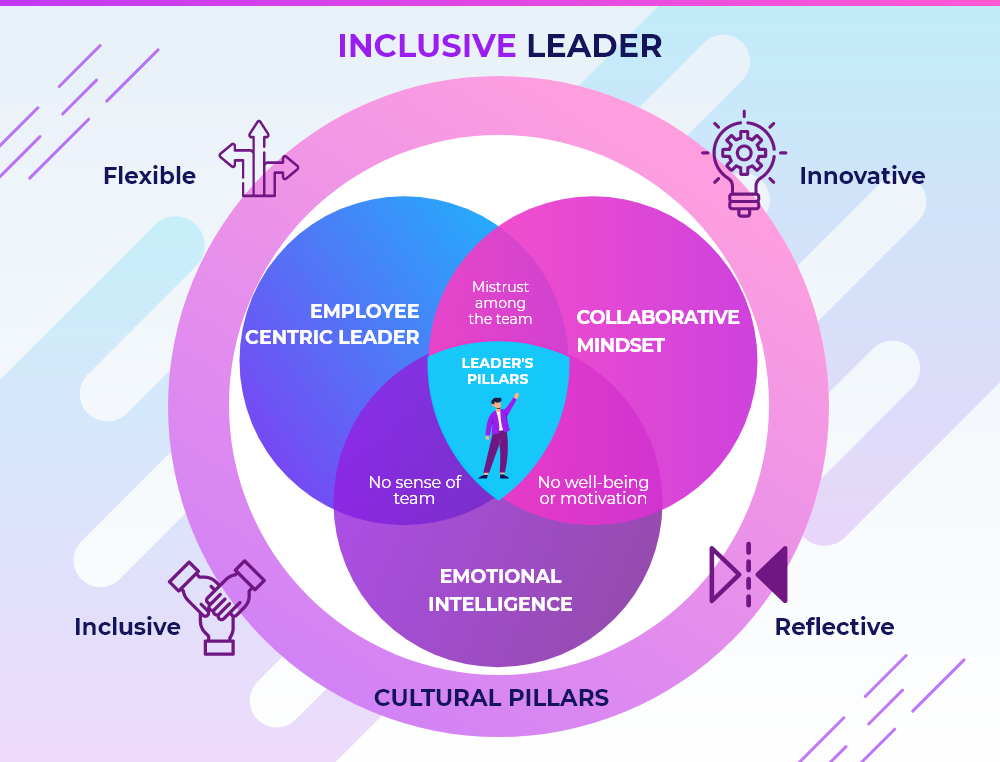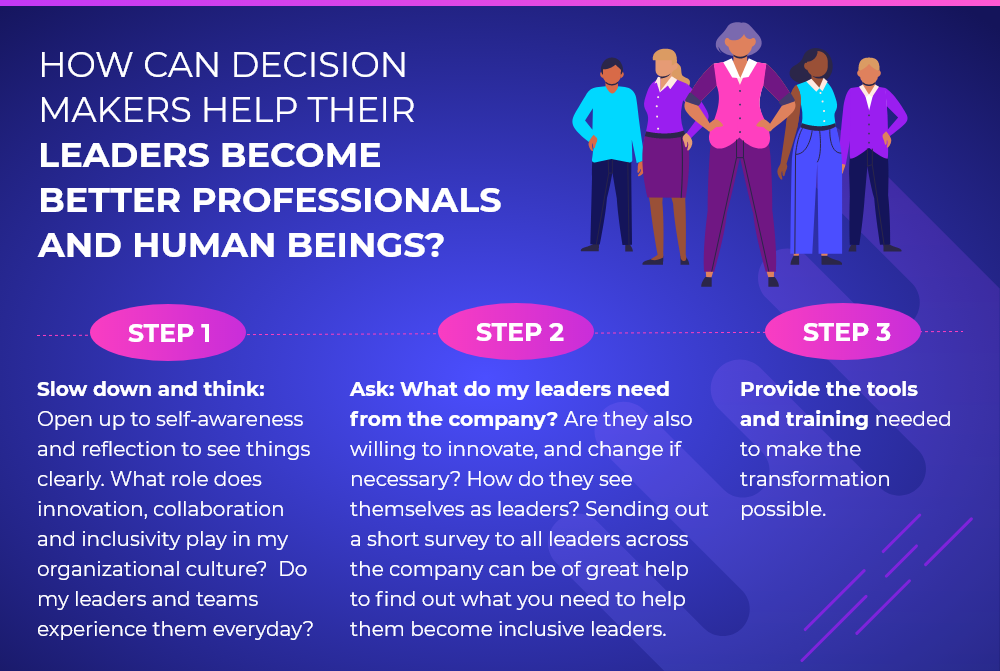Inclusive leaders make global teams work
Written by María Eugenia Raffaele
What does it imply to be a good leader in a world characterized by increasing digital disruption? In today’s reality, where organizations have diverse and vibrant talent located worldwide, inclusive leaders are the fundamental building block for a cohesive organizational culture and long-term success.
For the last decade, the hyperactive global business environment and the Digital Age have put the world of work upside down, giving rise to a new generation of leaders. Shaped by technological innovations and globally dispersed teams, there has been a marked shift towards more inclusive, empathic, flexible and collaborative leaders who can bring people together and make the most of them as a team. However, not all companies seem to be on the same page here and many continue relying on traditional hierarchical leadership models carrying out practices such as:

If you’re reading this and feel you’re heading the traditional direction, it’s time to revolutionize the way you think about organizational leadership today.
The inclusive worldview and the Digital Age have redefined where employees work and how they relate to each other. So, with employees around the world, physical distance and cultural differences can either represent greater disconnection and lack of productivity, or an opportunity to gain a competitive edge. It all depends on whether the organization has inclusive leaders or not.
How to become a better leader in a multipolar world of networked organizations
I believe the answer lies in 2 main factors:

Let me just say that inclusive leadership definition goes far beyond just breaking down barriers by bringing diverse people together. Many times, it happens that companies do have diverse teams, located around the world, with different ideas and rich perspectives, but too often, these employees don’t get to truly work together effectively or benefit from their diversity. The reason? They don’t have the guiding principles, innovative perspectives and tools they need from their leaders or the company they work for.
First of all, companies that aim at having inclusive leaders, need to make sure their culture:
- has innovation and a growth mindset as guiding principles,
- embraces change, and
- has gone through a digital transformation, or is on its way to do so.

How to be an inclusive leader?
Now that we know inclusivity is the key, the question is how to become one? Is it a natural talent that only some people have and others don’t? Once a traditional leader, always a traditional leader? No. With the proper self-awareness and the necessary tools, even leaders with the most old-fashioned traditional approaches can become more inclusive, foster collaboration and transcend physical boundaries. Transformation is possible for anyone who is ready and willing to learn.
So, a diversity and inclusion leadership looks something like this:

Becoming an inclusive leader who cultivates a sense of belonging, collaboration, growth and passion to diverse teams located worldwide doesn’t come down to implementing a list of tips. As you can see from the diagram above, there are several co-dependent intertwined elements that have to work together, as parts of a machine.
- A collaborative mindset: You’ll be connecting the world outside to the people inside your company by bringing them together as a team and making every individual’s perspective stronger and more effective. This implies empowering your employees and helping them work with each other.
- An employee-centric leader: Like any sports coach, you’ll be helping them to identify strengths and needs, and develop strategies for improvement. Inclusive leaders seek to be part of the remote team-building process and foster ongoing communication and dialogue.
- Emotional intelligence: Each employee sees the world through a different cultural lens and it will be the leader’s responsibility to recognize and positively manage emotions in himself and among the group to highlight the value of each person’s unique contribution. Take note: empathy here is key.

Why does your company need inclusive leaders today?
Simply because it’s the only way you can reach a cohesive organizational culture and stay competitive in this hyperactive environment. Need evidence? We’ve selected key data from Deloitte, Boston Consulting Group, and Korn Ferry research between 2018 and 2020, so you can see facts for yourself!
Organizations with inclusive leaders:
- Are 2x more likely to meet or exceed financial targets.
- Achieve 3 x higher performance.
- Become 6x more innovative and agile.
- Obtain 8x better business outcomes.
They also have
- 70% more chances to capture new markets.
- 75% to see ideas become productized.
- 87% to make better decisions.
Pss…
Implementing a digital solution can give leaders the possibility to make the most of technology and AI to transcend the physical boundaries of their teams and bring them closer. In StarMeUp we help dozens of leaders around the world to strengthen the relationships among their employees, and to meet the new dynamic needs in the world of work quickly and effectively. Building an effective modern digital culture is the first step to success, the second one is action!
Evidence speaks for itself, then – the future of work needs inclusive leaders, and guess what? The future of work is here! I know it takes energy and deliberate effort to create an inclusive culture, and leaders play a key role to make it happen. Just keep an open mind, reflect upon daily practices and identify the needs to make adjustments as necessary.
It surely is a great challenge, but if you need further information on this subject, our group of specialists are willing to guide you through. We can do it together!
